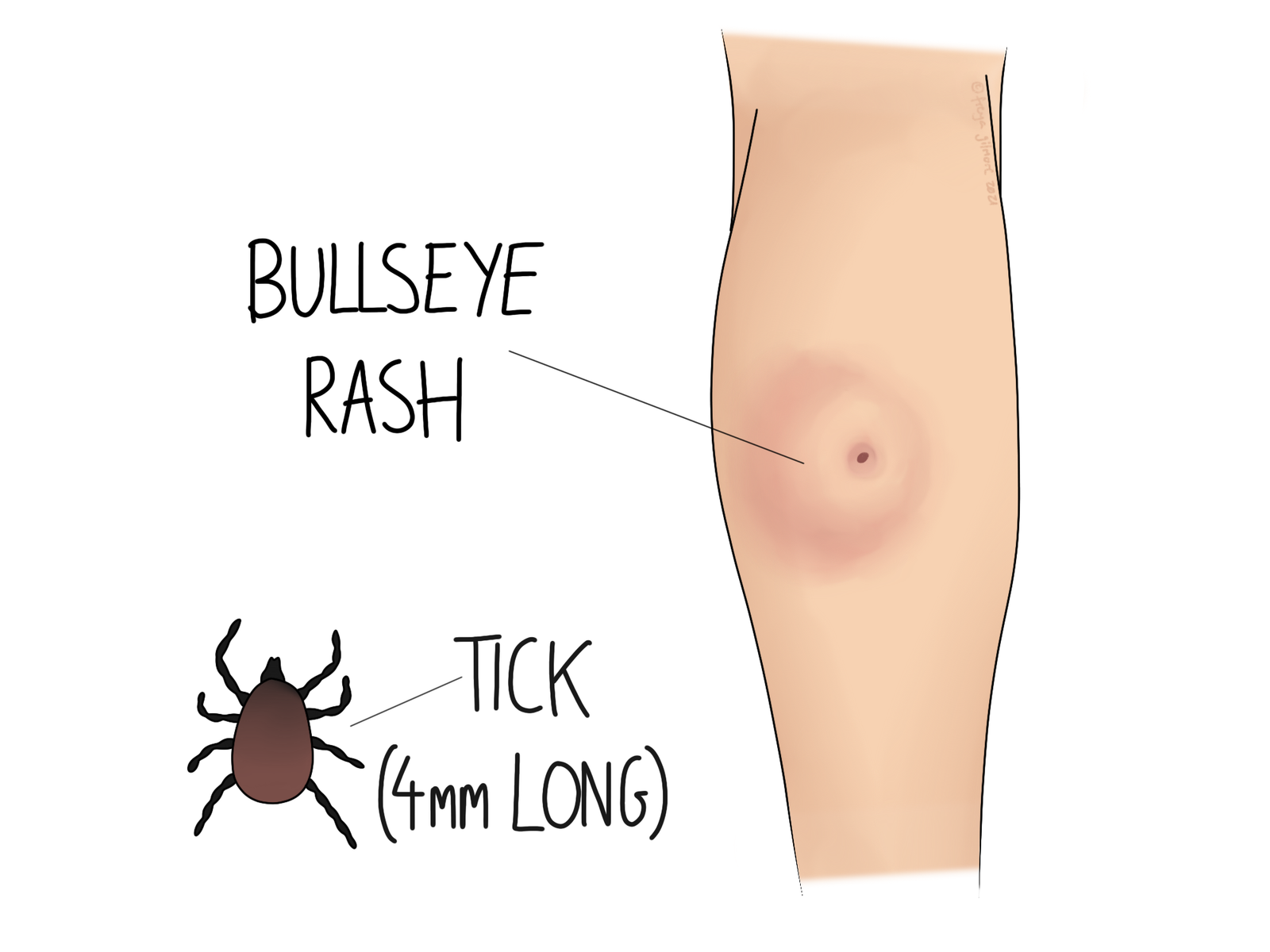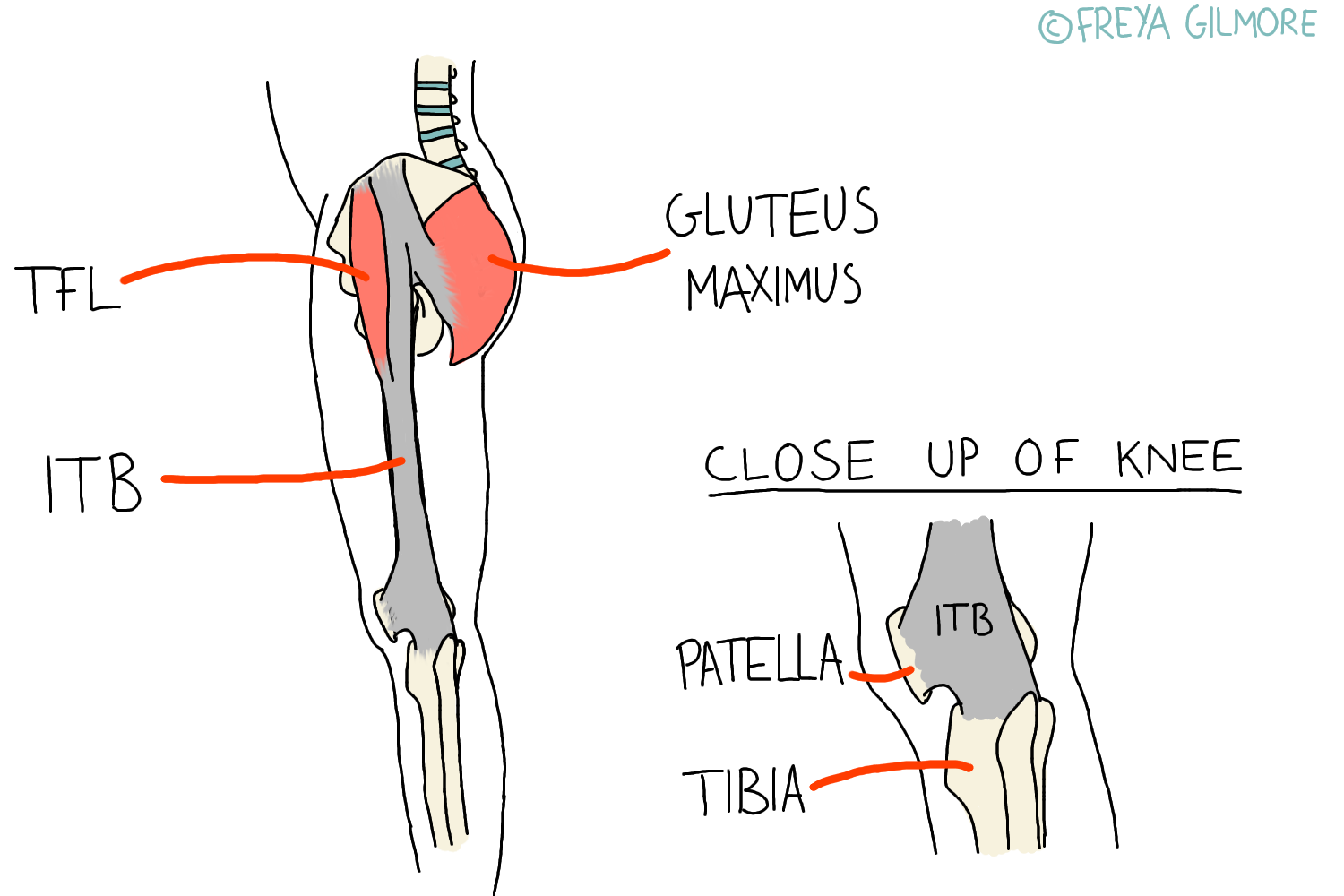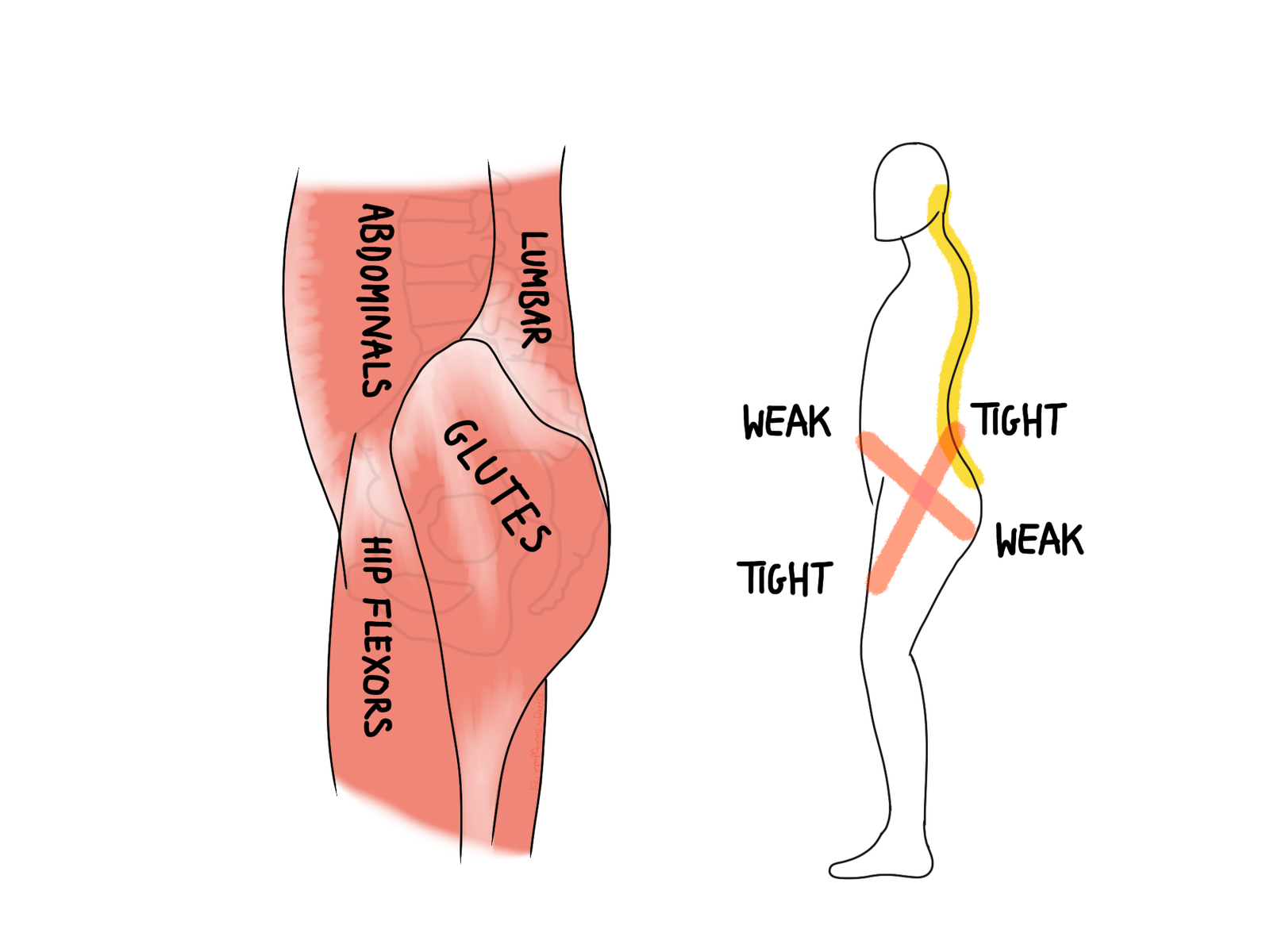The IT band is a band of tissue that runs down the side of the…

Lyme Disease
Often patients come to clinic with joint and muscle symptoms, but no diagnosis. It is your osteopath’s job to give you a diagnosis through taking your case history and examining you. However- not all muscle or joint pains are within your osteopath’s remit, but we still need to be able to recognise these conditions and refer you to someone more appropriate.
 What is Lyme Disease?
What is Lyme Disease?
This is a bacterial infection that can cause a rash, followed by joint pain and fatigue. Left untreated, it can develop into a chronic condition. Fortunately, when it is spotted early, it can be treated with antibiotics.
Ticks across the UK carry the bacteria that causes Lyme Disease. They are much smaller than people typically imagine, and even when engorged you might not spot one. Although they are mostly found in long grass, especially in areas with abundant wildlife, they have been found in gardens and more urban areas too. Advice for walking in long grass is to keep skin covered as much as as possible. Insect repellents can be useful, but checking your skin for ticks after a walk may be the most important measure.
Symptoms and Management
Speak to your pharmacist if you find a tick or bite on your skin. If it is attached, do not pull it off by hand as this will likely leave the mouthparts embedded in the skin. Use fine tweezers to get as close to the skin as possible (instructions here).
The most telling early symptom is the “bullseye rash”. Not all cases will develop a clear bullseye, and it will not be so clear on darker skin. When it does develop, it comes on weeks to months after the bite. The area may be hot, red, or swollen. Despite this, it may not actually be painful. By this point you should speak to your GP and say that you suspect Lyme Disease. As it is a bacterial infection, it can be effectively treated with antibiotics, especially when caught early.
There may be more general signs of infection too. Generally feeling under the weather or fatigued can be signs of the condition, even if the rash is not clear.
Chronic Lyme Disease
Chronic Lyme Disease has similar features to conditions like Chronic Fatigue (CFS) and ME (myalgic encephalitis). The widespread joint pain and fatigue are also hallmarks of fibromyalgia. Symptoms can progress months or years after the original infection. Unfortunately, there is no particular recommended treatment plan. Osteopathy can help with the symptoms of fibromyalgia, so some people with Chronic Lyme Disease may find relief with treatment. One of the most effective treatment plans for fibromyalgia is supported return to exercise. It may seem counter intuitive, but it often helps to ease the fatigue. A similar approach for Lyme may prove helpful. Your osteopath will work with you to devise a treatment plan that is most effective for you.
Contact your GP if you suspect you might have Lyme Disease. For other aches and pains, book an appointment in Farnborough here.



